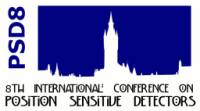Speaker
Dr
Joan Marc Rafi
Description
Particle tracking detectors made on high resistivity (HR) float zone (FZ) silicon are widely used in high energy physics experiments. Results from the CERN RD48 and RD50 collaborations have shown that diffusion oxygenated FZ (DOFZ) silicon can better withstand the high hadron fluences expected for 10 years operation of the Large Hadron Collider at CERN. Recently, new semiconductor industry interests and developments have enabled the production of magnetic Czochralski (MCZ) Si wafers with sufficiently HR and with a well-controlled high concentration of interstitial oxygen. In order to shed some further light on the behavior of the HR MCZ n-type material under electron irradiation, we investigate here the effects of 2 MeV electron irradiation, up to a fluence of 5x1016 e/cm2, on the electrical and carrier lifetime properties of p-on-n silicon diodes fabricated on different substrate materials, including high resistivity (HR) standard and oxygenated float zone, as well as HR magnetic Czochralski silicon. A progressive degradation of the characteristics is observed for all devices, pointing to a generation of bulk damage. Interestingly, a significant increase of the effective donor concentration is observed after the highest fluences for all materials. This degradation in the electrical properties should be taken into account for the use of these HR Si materials under high energy electron environments.

